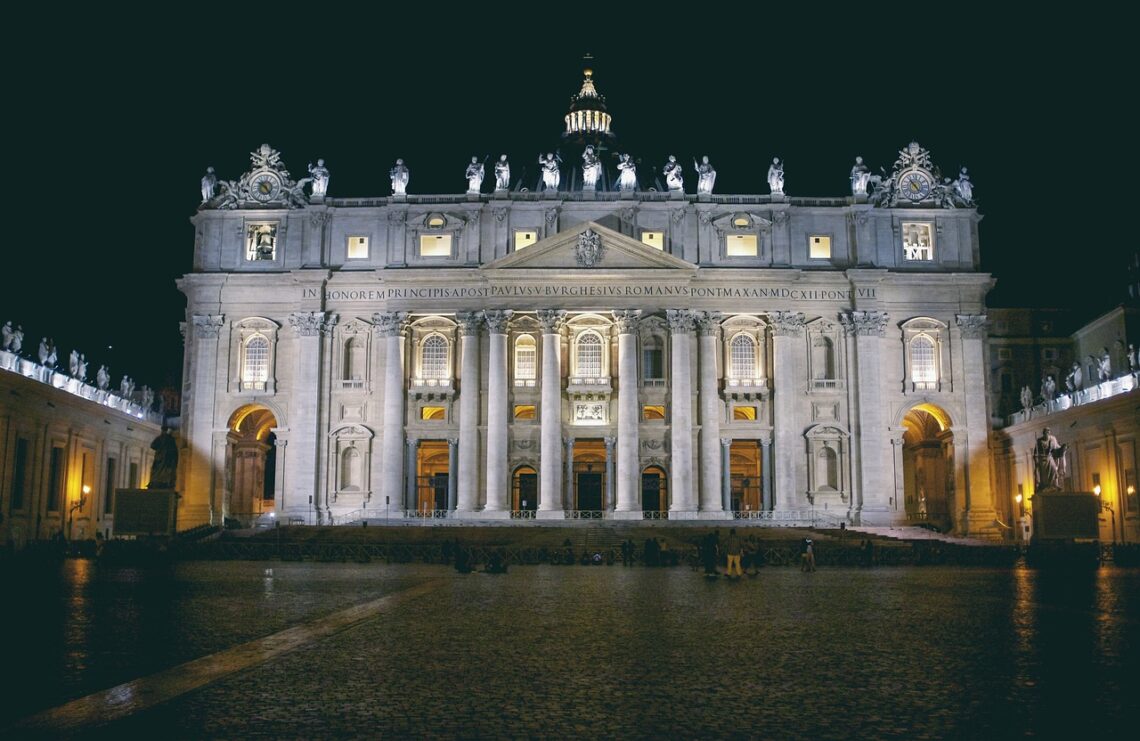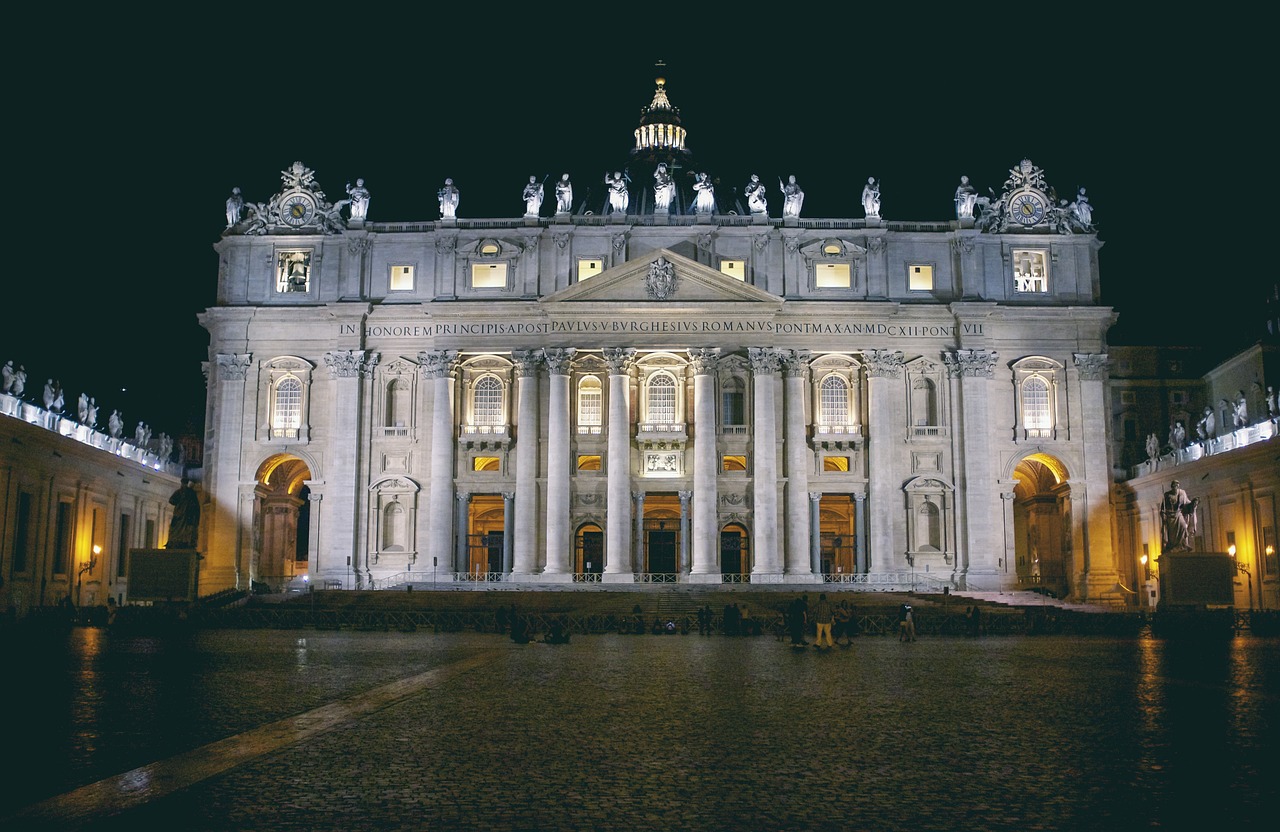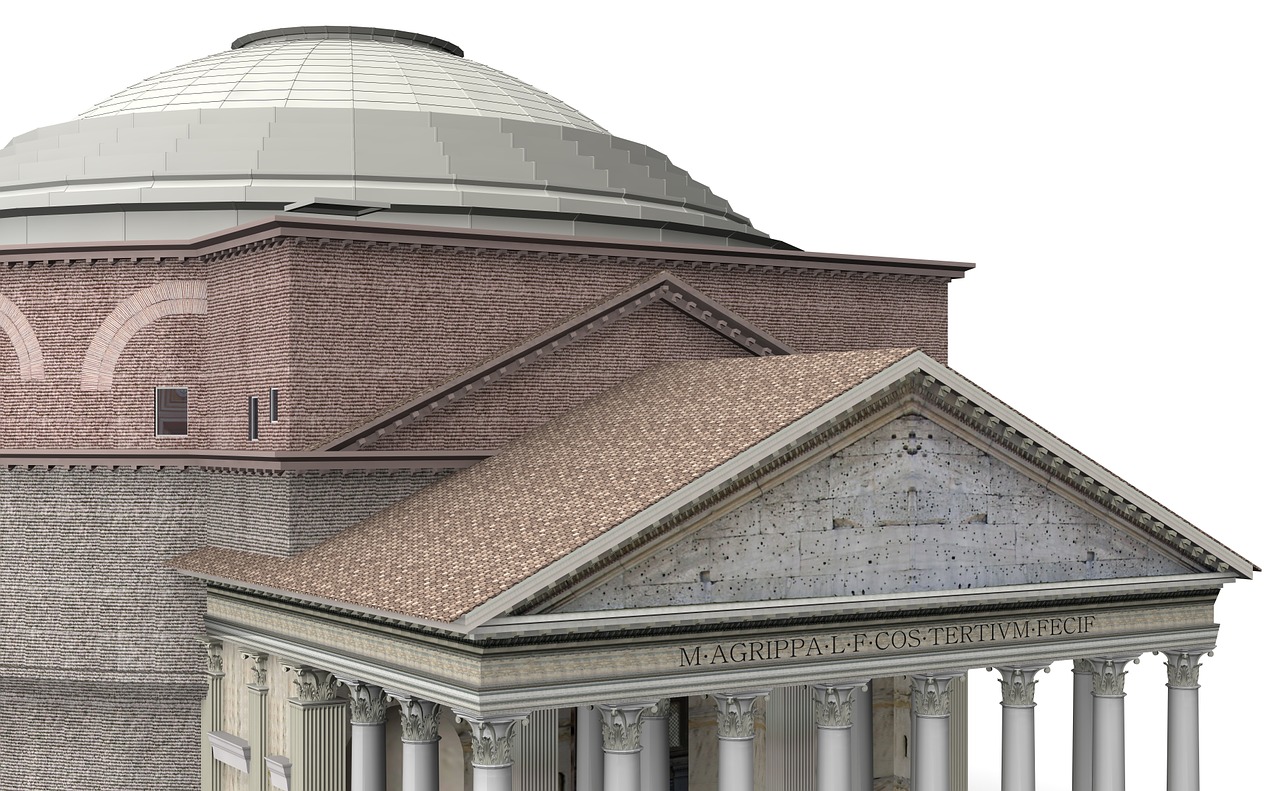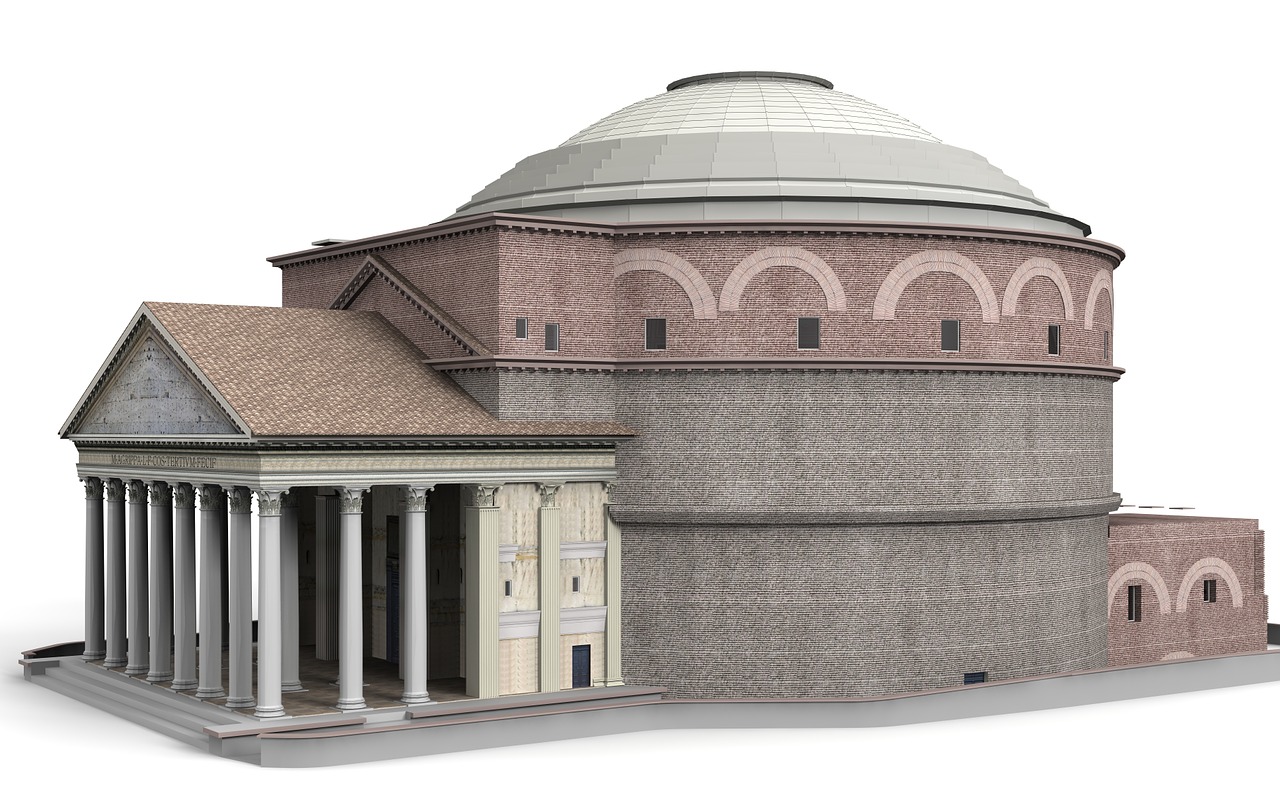
What Are The Top Tourist Attractions In Rome?
Are you ready to embark on a journey through the enchanting city of Rome? Get ready to immerse yourself in a rich tapestry of history, culture, and architectural wonders. In this article, we will explore the top tourist attractions that have captivated travelers from all corners of the globe. From the iconic Colosseum to the grandeur of Vatican City, get ready to be awe-struck by the incredible sights that await you in the Eternal City. Let’s delve into the heart of Rome and uncover its hidden treasures together.

The Colosseum
History and Importance
The Colosseum, also known as the Flavian Amphitheatre, is one of the most iconic historical landmarks in Rome. Built over 2,000 years ago, it stands as a testimony to the grandeur and power of the ancient Roman Empire. The construction of the Colosseum began in 70 AD and was completed in 80 AD during the reign of Emperor Vespasian. It was used as a venue for various public spectacles, such as gladiatorial contests, animal hunts, and mock naval battles.
The Colosseum holds immense historical importance as it represents the architectural and engineering mastery of the Romans. It had a seating capacity of around 50,000 spectators, making it the largest amphitheater ever built. The structure showcased the Roman empire’s wealth, military prowess, and social hierarchy. It was not only a symbol of entertainment but also a tool for maintaining social order and reinforcing Roman values.
Architecture and Design
The Colosseum is a marvel of ancient engineering and design. Its elliptical shape, measuring 189 meters long, 156 meters wide, and 50 meters high, is a perfect example of Roman architecture. The exterior walls are made of concrete and faced with travertine limestone, creating a striking contrast against the blue Roman sky.
The Colosseum consists of four stories, with each level containing arched openings. The ground floor housed the main arena, whereas the upper levels were divided into different sections for different social classes. The seating arrangement ensured that the higher the social status, the closer one was to the action.
The amphitheater also had a complex system of underground passages and trapdoors, allowing for the smooth flow of gladiators, animals, and props during performances. This intricate infrastructure showcases ancient Roman engineering and their ability to create grand and functional spaces.
Visiting Information
Visiting the Colosseum is a must for anyone traveling to Rome. It is located in the heart of the city and is easily accessible by public transportation. As one of the most popular tourist attractions, it is advisable to purchase tickets in advance to avoid long queues.
Once inside, visitors have the opportunity to explore the different levels of the Colosseum, including the underground chambers where the gladiators awaited their fate. Audio guides and guided tours are available, providing valuable insights into the history and significance of this iconic structure.
It is important to note that the Colosseum is a historical site, and visitors should respect its cultural importance. Preservation efforts are ongoing, and it is crucial to follow any guidelines or restrictions in place to ensure the site remains intact for generations to come.
The Vatican Museums
Historical Significance
The Vatican Museums are a treasure trove of art and history, located within the Vatican City. These museums hold immense historical significance as they house a vast collection of artworks and artifacts from various periods in human civilization. The museums were founded by Pope Julius II in the early 16th century and have since grown into one of the most renowned cultural institutions in the world.
The Vatican Museums are not only significant from an artistic standpoint but also serve as a testament to the power and influence of the Roman Catholic Church. The artworks and historical artifacts on display tell the story of the Vatican’s rich history and its contribution to the development of Western civilization.
Art Collections
The art collections in the Vatican Museums are nothing short of extraordinary. They encompass a wide range of styles, genres, and time periods, making it a paradise for art enthusiasts and historians alike. The museums house works by renowned artists such as Michelangelo, Raphael, Caravaggio, and Leonardo da Vinci.
One of the most famous works in the Vatican Museums is Michelangelo’s masterpiece, the Sistine Chapel ceiling. Painted between 1508 and 1512, it depicts various scenes from the Bible, including the creation of Adam. The intricate details and vibrant colors of this fresco are truly awe-inspiring.
Besides the Sistine Chapel, the Vatican Museums also boast a vast collection of sculptures, tapestries, and historical artifacts. Visitors can spend hours wandering through the galleries, marveling at the artistic achievements of centuries past.
Sistine Chapel
The Sistine Chapel is undoubtedly the crown jewel of the Vatican Museums. It is a sacred space where cardinals gather to elect the new Pope, but it is also open to the public for viewing and prayer. The chapel’s importance lies not only in its religious significance but also in its remarkable artistic heritage.
The Sistine Chapel is most famous for its ceiling, painted by Michelangelo. It took him four years to complete the 12,000 square feet of frescoes, depicting scenes from the Book of Genesis and other biblical narratives. The ceiling’s centerpiece, “The Creation of Adam,” is a visual masterpiece that has become an iconic image in art history.
When visiting the Sistine Chapel, it is essential to respect its sacred nature. Photography is not allowed inside, and visitors should maintain a quiet and reverent atmosphere. Despite the crowds, take a moment to stand in awe of this extraordinary testament to artistic genius and faith.

St. Peter’s Basilica
Religious Significance
St. Peter’s Basilica, located within the Vatican City, is one of the most revered religious sites in the Christian world. It stands on the traditional site where Saint Peter, one of Jesus’s apostles and the first Pope, was believed to have been buried.
For Catholics, St. Peter’s Basilica holds immense religious significance as it serves as the final resting place of many popes, including Pope John Paul II. It is also the site of important religious ceremonies and pilgrimages, attracting millions of faithful believers each year.
Architecture and Interior
St. Peter’s Basilica is a magnificent masterpiece of Renaissance architecture. Designed by prominent architects such as Donato Bramante, Michelangelo, and Gian Lorenzo Bernini, it is a testament to the creative genius of the period.
The basilica’s exterior showcases grandeur and elegance, with its iconic dome dominating the Roman skyline. The interior is equally breathtaking, with intricate marble decorations, stunning frescoes, and ornate altarpieces. Visitors can marvel at renowned artworks such as Michelangelo’s Pietà and Bernini’s Baldachin, masterpieces that exemplify the height of artistic achievement during the Renaissance.
St. Peter’s Square
St. Peter’s Basilica is surrounded by St. Peter’s Square, an expansive plaza that serves as a gathering place for religious ceremonies and papal audiences. Designed by Bernini, the square features two colonnades that embrace visitors as they enter the area. The central obelisk, brought from Egypt, adds a sense of grandeur and symbolism to the square.
St. Peter’s Square is also the site of the Papal Blessing, known as the Urbi et Orbi, which is delivered by the Pope on special occasions. Pilgrims from around the world flock to the square to receive this blessing, creating a unique and profound experience of collective faith.
As you stand in St. Peter’s Square and gaze upon the majesty of the basilica, you can’t help but feel a sense of awe and reverence. It is a place where faith and history come together, leaving a lasting impression on all who visit.
Roman Forum
Historical Importance
The Roman Forum, located in the center of Rome, was the political, religious, and commercial heart of the ancient city. It served as the hub of Roman public life for over a millennium, witnessing countless historical events and shaping the course of Western civilization.
During its prime, the Roman Forum was lined with monumental buildings, temples, and basilicas. It was the site of political debates, speeches by famous orators, and elections. It also housed important religious sites, such as the Temple of Vesta and the Vestal Virgins’ residence.
Archaeological Ruins
Today, the Roman Forum stands as a vast archaeological site, giving visitors a glimpse into the grandeur and complexity of ancient Rome. Walking through its ruins, you can imagine the bustling crowds, the vibrant markets, and the political debates that once filled this historic space.
The surviving structures within the Roman Forum include the Temple of Saturn, the Arch of Titus, and the Curia Julia, among many others. The remnants of these buildings allow visitors to appreciate the architectural prowess of the Romans and the lasting impact of their civilization.
Temples and Basilicas
The Roman Forum is home to several temples and basilicas, which were vital centers of religious and legal activities. The Temple of Saturn, dedicated to the god of agriculture, housed the state treasury and acted as the center of public finances. The Temple of Vesta, the goddess of the hearth, was where the Vestal Virgins performed their sacred rituals.
The Basilica Aemilia and the Basilica Julia were renowned for their judicial functions, serving as law courts and meeting places. These grand structures showcased the Romans’ understanding of architectural design and their ability to create awe-inspiring spaces for public use.
As you walk among the ancient ruins of the Roman Forum, you can’t help but appreciate the historical importance of this site and its role in shaping the world as we know it today.

Trevi Fountain
Symbolic Meaning
The Trevi Fountain is not only a magnificent work of art but also a symbol of luck and wishes. According to legend, tossing a coin into the fountain guarantees a return to Rome. This tradition has become deeply ingrained in the hearts of visitors from around the world, making the Trevi Fountain a must-visit attraction.
Design and Artwork
Designed by Nicola Salvi and completed by Giuseppe Pannini in the 18th century, the Trevi Fountain is a true masterpiece of Baroque art. Its intricate sculptures and cascading water create a mesmerizing spectacle that captivates all who visit.
The central figure of the fountain is Oceanus, the god of the sea, taming the waters through his trident. He is flanked by two Tritons, mythical sea creatures, and surrounded by statues representing abundance and fertility. The grandeur and attention to detail of the sculptures reflect the Baroque period’s love for theatricality and drama.
Throwing Coins Tradition
Perhaps the most charming aspect of the Trevi Fountain is the tradition of tossing coins into its waters. Visitors come from all corners of the globe to partake in this custom, believing that it ensures a return to Rome or grants a wish.
It is customary to stand with your back to the fountain and toss the coin using your right hand over your left shoulder. Each year, millions of euros are collected from the bottom of the fountain and donated to various charities, further cementing the fountain’s significance as a symbol of hope and goodwill.
As you visit the Trevi Fountain, take a moment to participate in this age-old tradition. Feel the cool water against your fingertips as you make your wish, knowing that you are connecting with countless others who have done the same throughout history.
Pantheon
Architectural Wonder
The Pantheon is a testament to ancient Rome’s architectural achievements and remains one of the most influential buildings in history. This temple, dedicated to all the gods of ancient Rome, is a marvel of engineering and design that has stood for almost 2,000 years.
The most striking feature of the Pantheon is its remarkable dome, which is still the world’s largest unreinforced concrete dome. The oculus, a circular opening at the top of the dome, allows natural light to flood the interior, creating a captivating play of light and shadow.
Rotunda and Dome
The interior of the Pantheon is equally awe-inspiring. The rotunda, or the main space, is perfectly proportioned and creates a sense of harmony and tranquility. It is adorned with marble and features several alcoves that once held statues of the gods.
The dome’s structure consists of progressively lighter materials, allowing for a reduction in weight as it ascends. This engineering feat creates a feeling of weightlessness and adds to the dome’s sense of grandeur. The Pantheon’s design has influenced countless buildings throughout history, including St. Peter’s Basilica in the Vatican.
Tombs and Monuments
The Pantheon also serves as the final resting place for several notable figures. Among them are the Renaissance artist Raphael and the first two kings of Italy, Vittorio Emanuele II and Umberto I. These tombs add an extra layer of historical significance to the already impressive architecture of the Pantheon.
As you step inside the Pantheon, you cannot help but be in awe of the ancient Romans’ architectural prowess and their ability to create spaces that still inspire wonder and admiration to this day.
Spanish Steps
Historical Background
The Spanish Steps, known as Scalinata di Spagna in Italian, are one of Rome’s most iconic landmarks. They were constructed in the early 18th century to connect the Spanish Embassy and the Trinità dei Monti church situated on top of the hill.
The steps have served as a meeting place and gathering spot for centuries, attracting locals and visitors alike. They are named “Spanish Steps” due to the Spanish Embassy’s proximity, although their design and construction were the work of an Italian architect, Francesco De Sanctis.
Staircase Design
The Spanish Steps consist of 138 steps divided into twelve flights, leading up from Piazza di Spagna to the Trinità dei Monti church. The design of the steps is an excellent example of Baroque architecture, characterized by its dramatic and theatrical style.
The gentle slope and curvaceous form of the staircase create a sense of harmony and fluidity. At the foot of the steps, there is a fountain known as the “Fontana della Barcaccia” or “Fountain of the Ugly Boat.” This unique fountain compliments the design of the Spanish Steps and adds to their charm.
Piazza di Spagna
Piazza di Spagna, at the base of the Spanish Steps, is a bustling square that serves as a popular meeting point and shopping destination. It is lined with upscale boutiques, cafes, and art galleries, attracting fashion enthusiasts and artists.
The square also houses the Keats-Shelley House, a museum dedicated to the Romantic poets John Keats and Percy Bysshe Shelley. The museum provides an insight into their lives and works, further adding to the artistic and literary significance of the Spanish Steps area.
As you climb the Spanish Steps and reach the top, take a moment to admire the sweeping views over the square and the cityscape beyond. It is a testament to Rome’s timeless beauty and the vibrant energy that permeates its streets.
Piazza Navona
Baroque Architecture
Piazza Navona is a lively public square in Rome that showcases the grandeur of Baroque architecture. Originally built as a stadium in the 1st century AD, it was transformed into a public square during the Baroque period and has since become one of Rome’s most vibrant gathering places.
The square is surrounded by elegant palaces, churches, and fountains, creating a harmonious ensemble that exemplifies the artistic and architectural achievements of the time. The buildings’ facades feature intricate details and ornate decorations, adding a sense of drama and opulence to the area.
Fountains and Sculptures
Piazza Navona is renowned for its impressive fountains, which serve as the focal points of the square. The most famous of these is Bernini’s Fountain of the Four Rivers, located in the center of the square. The fountain represents the four great rivers of the world – the Nile, Ganges, Danube, and Rio de la Plata.
There are two additional fountains in Piazza Navona: the Fountain of the Moor and the Fountain of Neptune. Each fountain is a testament to the skill and creativity of the artists who designed them, leaving visitors in awe of their beauty and craftsmanship.
The square is also adorned with numerous sculptures and statues that celebrate Roman mythology and historical figures. As you stroll through Piazza Navona, take a moment to appreciate the intricate details and the lively atmosphere that permeates this unique space.
Street Performances
Piazza Navona is not only a feast for the eyes but also a haven for entertainment and street performances. Artists, musicians, and street performers gather in the square, providing a vibrant and lively atmosphere for visitors and locals alike.
From painters capturing the essence of Rome to magicians captivating audiences with their tricks, the lively street performances add an extra layer of charm and excitement to Piazza Navona. It is a place where the arts come to life, creating a truly unforgettable experience.
Villa Borghese Gardens
Expansive Green Space
Villa Borghese Gardens offer a tranquil oasis in the heart of Rome. Covering approximately 148 acres, the gardens are an expansive green space that provides respite from the bustling city streets. They are a favorite spot for locals and tourists alike to relax, unwind, and enjoy the beauty of nature.
The gardens feature lush lawns, picturesque lakes, and meandering paths that lead to hidden corners and stunning viewpoints. It is the perfect place to escape the crowds and immerse yourself in the serenity of nature.
Museums and Galleries
Within the Villa Borghese Gardens, there are several museums and galleries that house impressive art collections. The most famous of these is the Galleria Borghese, which showcases sculptures by renowned artists such as Bernini and Canova.
The Galleria Borghese is a true treasure trove of Baroque and Renaissance art and offers a unique opportunity to admire masterpieces in an intimate setting. The museum’s collection includes works such as Bernini’s “Apollo and Daphne” and Caravaggio’s “The Deposition.”
Visitors can also explore other cultural institutions within the gardens, such as the Museo Nazionale Etrusco di Villa Giulia, which houses Etruscan and Roman artifacts, and the Casa del Cinema, a cinema museum that celebrates the history of Italian cinema.
Lake and Zoo
At the heart of the Villa Borghese Gardens lies a picturesque lake known as the Laghetto. Here, visitors can rent rowboats and leisurely paddle across the serene waters, enjoying the tranquility and natural beauty that surrounds them.
Another highlight of the gardens is the Bioparco di Roma, the city’s zoo. It is home to a diverse range of animal species and offers educational and entertaining experiences for visitors of all ages. The zoo’s commitment to conservation and animal welfare adds an extra layer of significance to this attraction.
As you explore the Villa Borghese Gardens, take the time to soak in the peaceful ambiance and appreciate the harmonious blend of art, nature, and culture that is found within this verdant paradise.
Castel Sant’Angelo
Castle History
Castel Sant’Angelo, also known as the Mausoleum of Hadrian, is a fortress located on the banks of the Tiber River. Built in the 2nd century AD, it was initially intended as a mausoleum for the Roman Emperor Hadrian and his family. However, it later served various purposes, including a papal residence and a prison.
Throughout its history, Castel Sant’Angelo has played a significant role in defending Rome and its rulers. It has witnessed sieges, battles, and even served as a secret escape route for popes during times of unrest.
Prison and Museum
Today, Castel Sant’Angelo stands as a testament to its rich history and serves as a museum that showcases its architectural and historical significance. Visitors can explore its ancient corridors, underground cells, and secret passages, gaining insight into the castle’s fascinating past.
The museum’s collection includes diverse artifacts, weapons, and artworks from different periods, providing a comprehensive overview of the site’s long and eventful history. It also offers stunning panoramic views of Rome from its rooftop terrace, allowing visitors to appreciate the city’s skyline and landmarks from a unique vantage point.
Bridge of Angels
One of the most striking features of Castel Sant’Angelo is the Bridge of Angels, which connects the fortress to the city of Rome. This magnificent bridge is adorned with ten statues of angels, created by various artists, including Gian Lorenzo Bernini.
Each statue depicts a different angel, which symbolizes a specific aspect of Christianity. The Bridge of Angels not only adds to the castle’s architectural beauty but also creates a sense of awe and wonder as visitors approach this historic site.
As you visit Castel Sant’Angelo, take the time to uncover its secrets and immerse yourself in the stories that have unfolded within its walls. It is a place where the past comes alive, leaving a lasting impression on all who venture through its gates.




